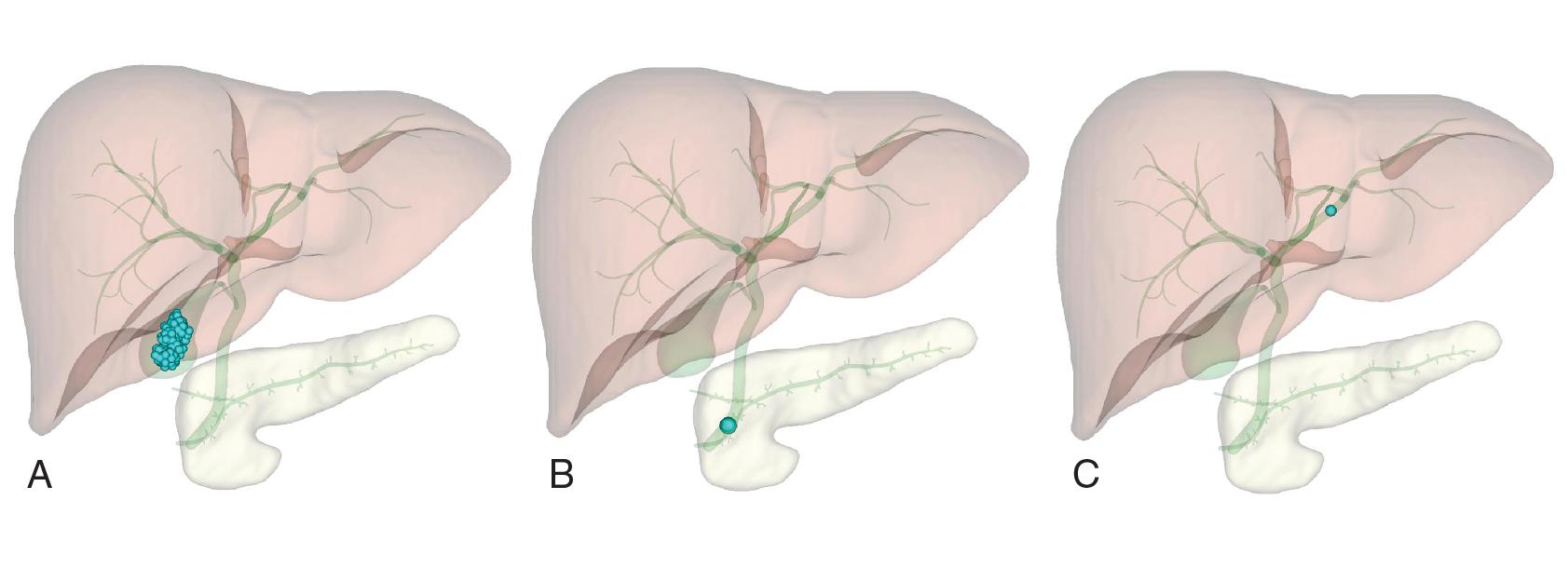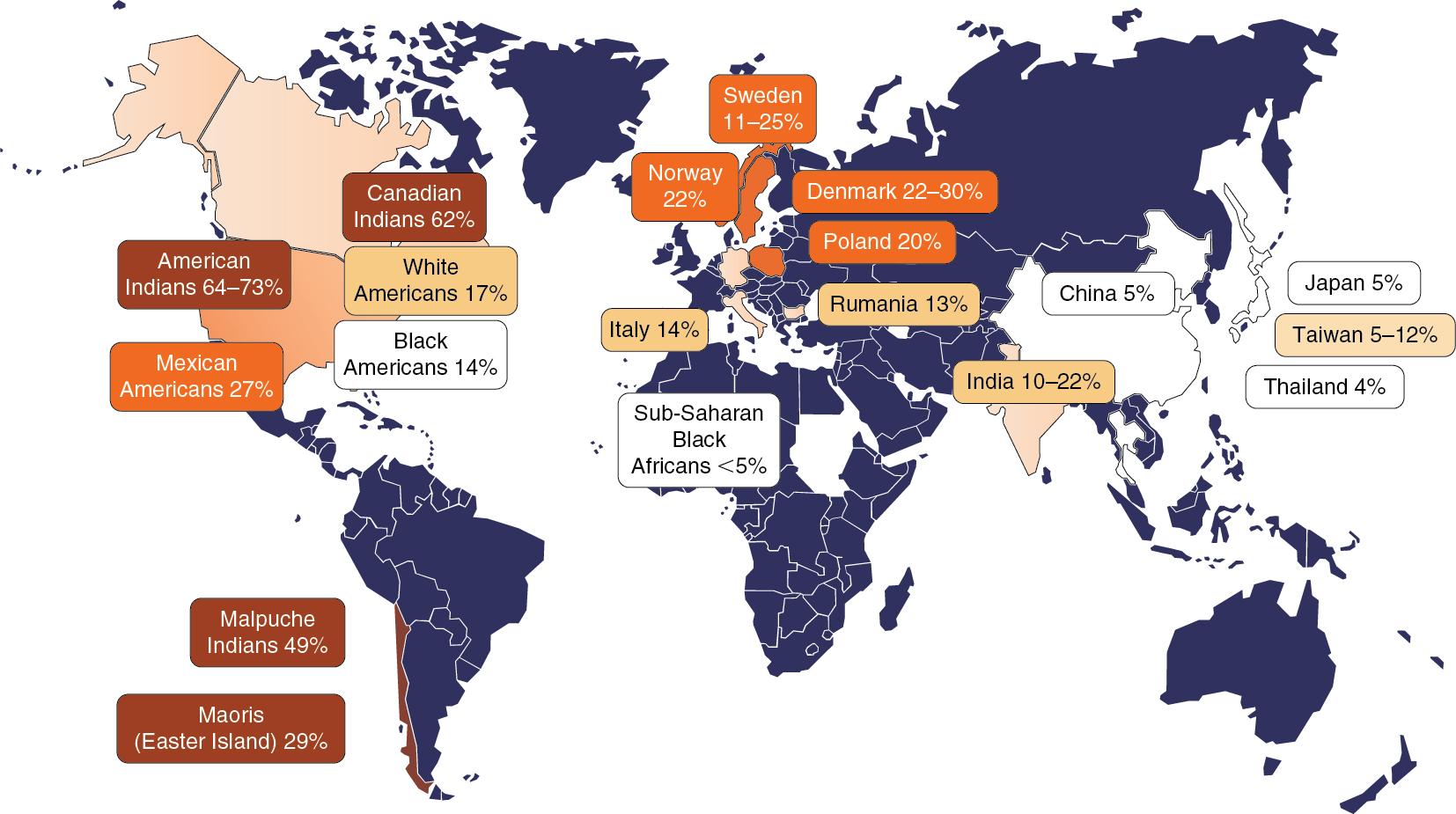Physical Address
304 North Cardinal St.
Dorchester Center, MA 02124
The aim of this chapter is to describe established and novel findings on the natural history of gallstones. Gallstones have been a scourge of humankind for millennia. Each year surgeons perform over 700,000 cholecystectomies in the United States alone, with an estimated annual cost of approximately $6.2 billion USD. , The annual rate of hospital admissions for acute cholecystitis and the associated hospital charges continue to increase, highlighting the great burden gallstone disease places on the American healthcare system. Despite these increasing trends, a substantial proportion of the population have asymptomatic gallstones that will likely never come to the attention of the individual or medical provider. In this chapter we focus on the epidemiology and natural history of symptomatic and asymptomatic gallstones and the evolving understanding of the many factors that may influence development of complications. The implications of these findings for the diagnosis and treatment of gallstones disease and directions for future research are also discussed.
Humans have recorded gallstone disease since the beginning of written medical communication. Indeed, it is documented that ancient Greeks and Egyptians suffered from the disease. In that time and for the following years, treatment consisted of various herbal remedies. The first recorded operation for gallstone disease was performed by Jean-Louis Petit in 1743. When exploring a patient with abdominal pain and an erythematous abdomen, Petit lanced the abdominal wall, opened the gallbladder, and removed the stones. He then allowed the gallbladder to fistulize, thus performing the first cholecystostomy (see Chapter 35 ). Over a century later, the American surgeon John Stough Bobbs performed the first deliberate cholecystostomy after identifying an inflamed and stone-filled gallbladder in a young woman undergoing laparotomy. He proceeded to incise the gallbladder, remove the stones, and close the organ without extirpation or drainage. It was Carl Langenbuch, a pioneering German surgeon, who ushered in the modern era of gallbladder surgery by proposing removing the gallbladder as opposed to removing stones alone. An additional century passed before another pioneering German surgeon, Erich Mühe, performed the first laparoscopic cholecystectomy in 1985 and set the stage for the minimally invasive approach to gallbladder disease (see Chapter 36 ).
Dr. Mühe presented his work to the Congress of the German Surgical Society in 1986. The lecture was not the success he had hoped and was only published as a brief abstract in the proceedings. At the 1990 meeting of the Society of American Gastrointestinal Surgeons (SAGES), several French surgeons were recognized for their early work in laparoscopic cholecystectomy, but Dr. Mühe was not acknowledged. It was not until 1999 when he was recognized by SAGES for performing the first laparoscopic cholecystectomy.
Gallstones are firm masses formed within the biliary tract as precipitations of cholesterol or bilirubin and have distinct etiologies (see Chapter 8 ). Gallstones are categorized by their color or primary chemical component, notably cholesterol (yellow), black pigment, or brown pigment stones. The location of the mass dictates the terminology used (i.e., cholelithiasis is within the gallbladder, choledocholithiasis is within an extrahepatic bile duct, and hepatolithiasis is within an intrahepatic bile duct; Fig. 33.1 ). In the United States, the most common form of gallstones is cholesterol stones formed within the gallbladder, and as such, this will be the major focus of this chapter. Further clarification should be made regarding the term “gallstone disease,” which represents the manifestation of gallstones and ensuing signs or symptoms. Therefore patients with gallstones may be asymptomatic (stones discovered incidentally) or symptomatic (presence of gallstone disease). Gallstone disease can be separated into uncomplicated disease (biliary colic, chronic cholecystitis) or complicated disease (acute cholecystitis, obstructive jaundice, gallstone ileus, acute gallstone pancreatitis) based on the manifestation (see Chapters 37 and 38 ).

The prevalence of gallstones in a given population is multifactorial and primarily driven by gender, age, diet, ethnicity, and genetics. In 1993 the NIH estimated that approximately 10% to 15% of the US adult population had gallstones. Since that time, expanded data on the global prevalence of gallstones have revealed the broad ranges of gallstone prevalence observed across various countries and ethnicities, including the United States, South America, Europe, Asia, and Africa. The estimated global prevalence of gallstones in women is shown in Fig. 33.2 . Research from the National Institute of Diabetes and Digestive and Kidney Diseases (NIDDK) has provided some of the best insight into the prevalence of gallstones within US populations. Implemented through the National Health and Nutrition Examination Survey (NHANES) III by the US Centers for Disease Control and Prevention (CDC) from 1988 until 1994, 14,294 people aged 20 to 74 years underwent screening and completed ultrasound examinations of the gallbladder for detection of stones. The overall prevalence of gallstones was 5.5% in men and 8.6% in women. Gallstone prevalence increased with age, with reported 17.2% in men and 16.4% in women by age 60 to 74 years. The NHANES III study revealed substantial variation in gallstone prevalence according to race and ethnicity with the lowest prevalence in non-Hispanic Black men (3.9%) and highest in Mexican-American women (12.8%).

American Indians are estimated to have the highest rates of gallstones and gallbladder disease in the world. Prevalence of gallstones in separate American Indian communities in four states—Arizona, Oklahoma, North Dakota, and South Dakota—were 18% in women and 17% in men. When using a composite score of the presence of stones and prior cholecystectomy, the overall prevalence in this population was 64% in women and 30% in men.
Become a Clinical Tree membership for Full access and enjoy Unlimited articles
If you are a member. Log in here